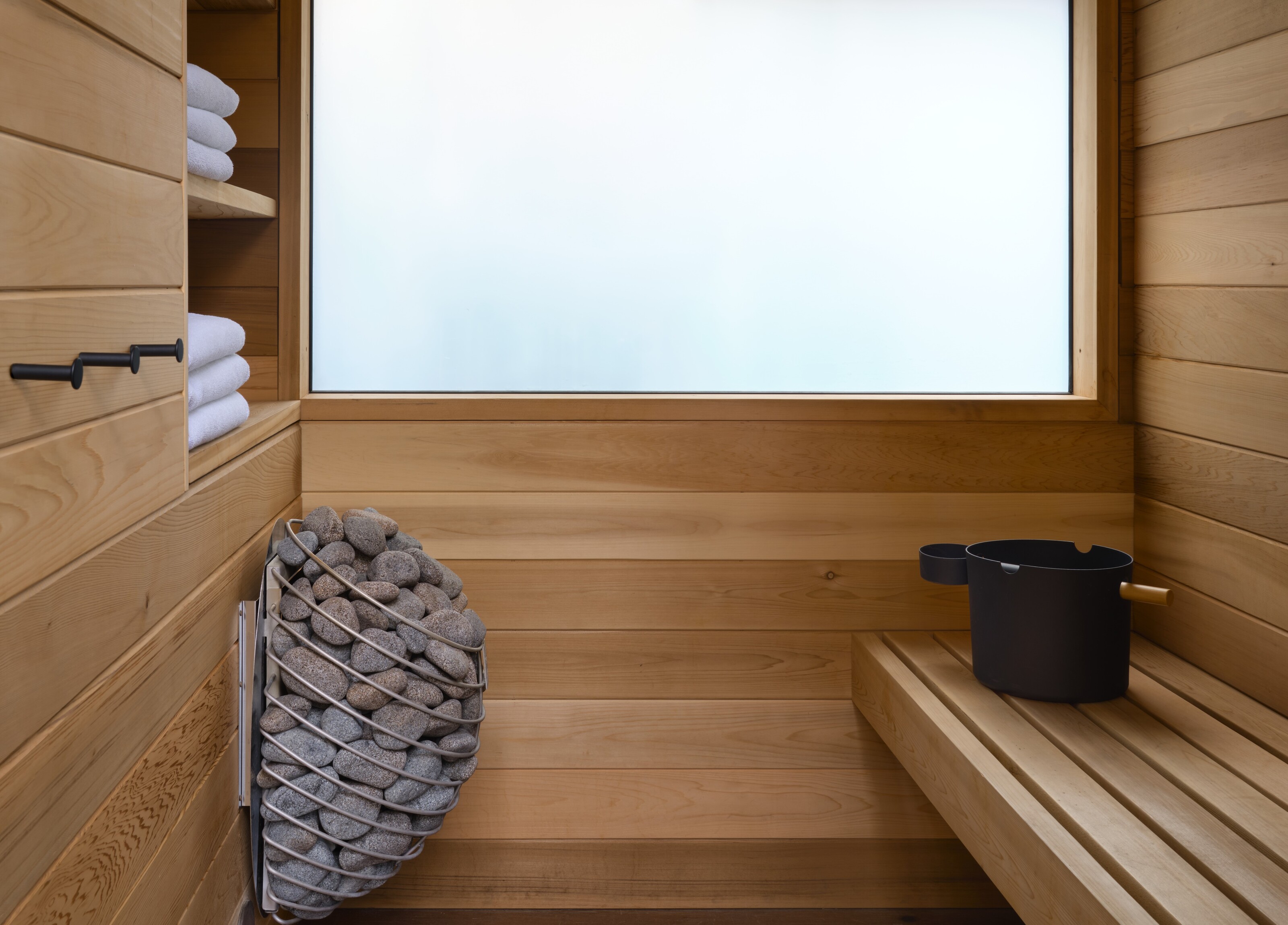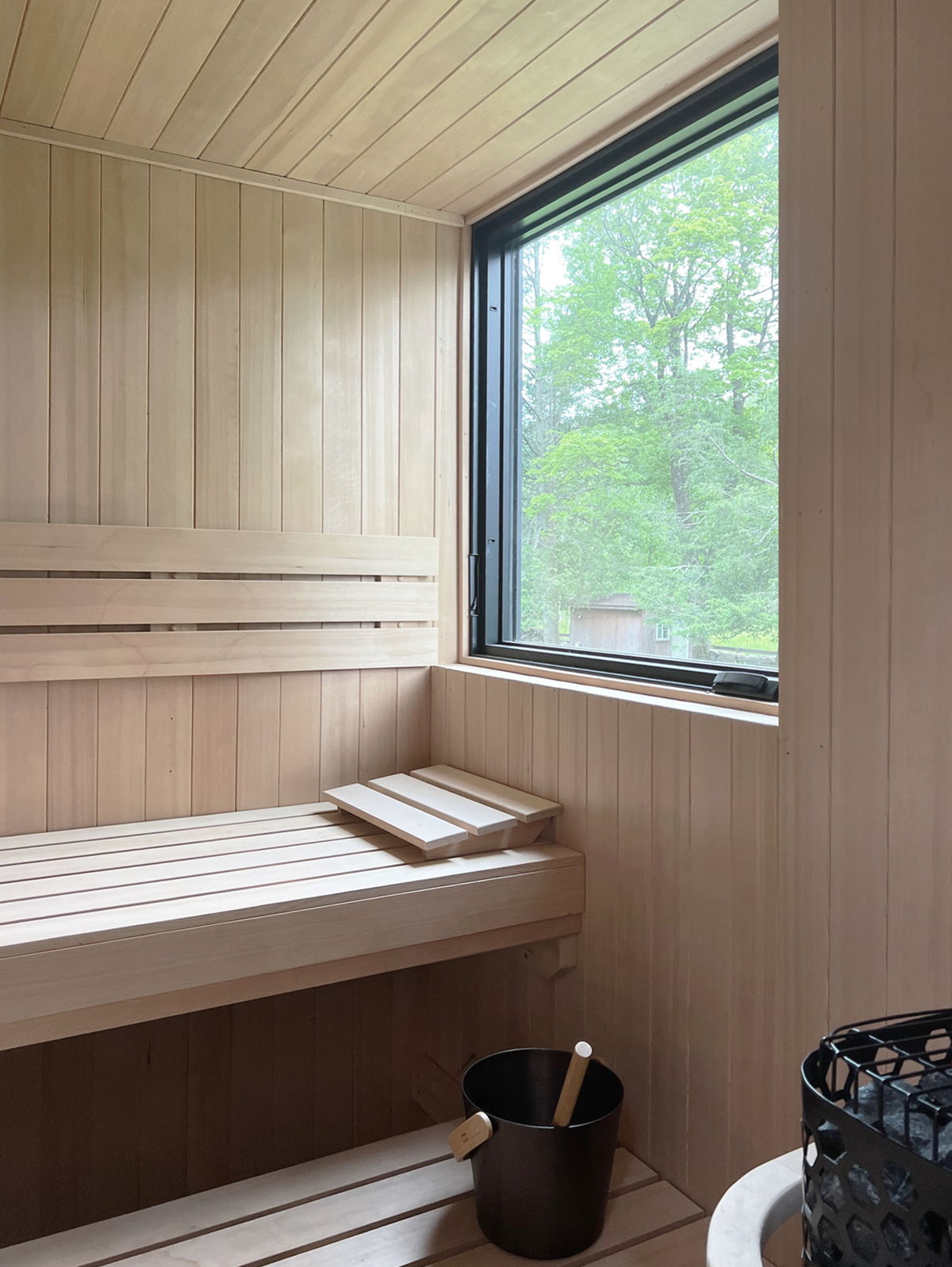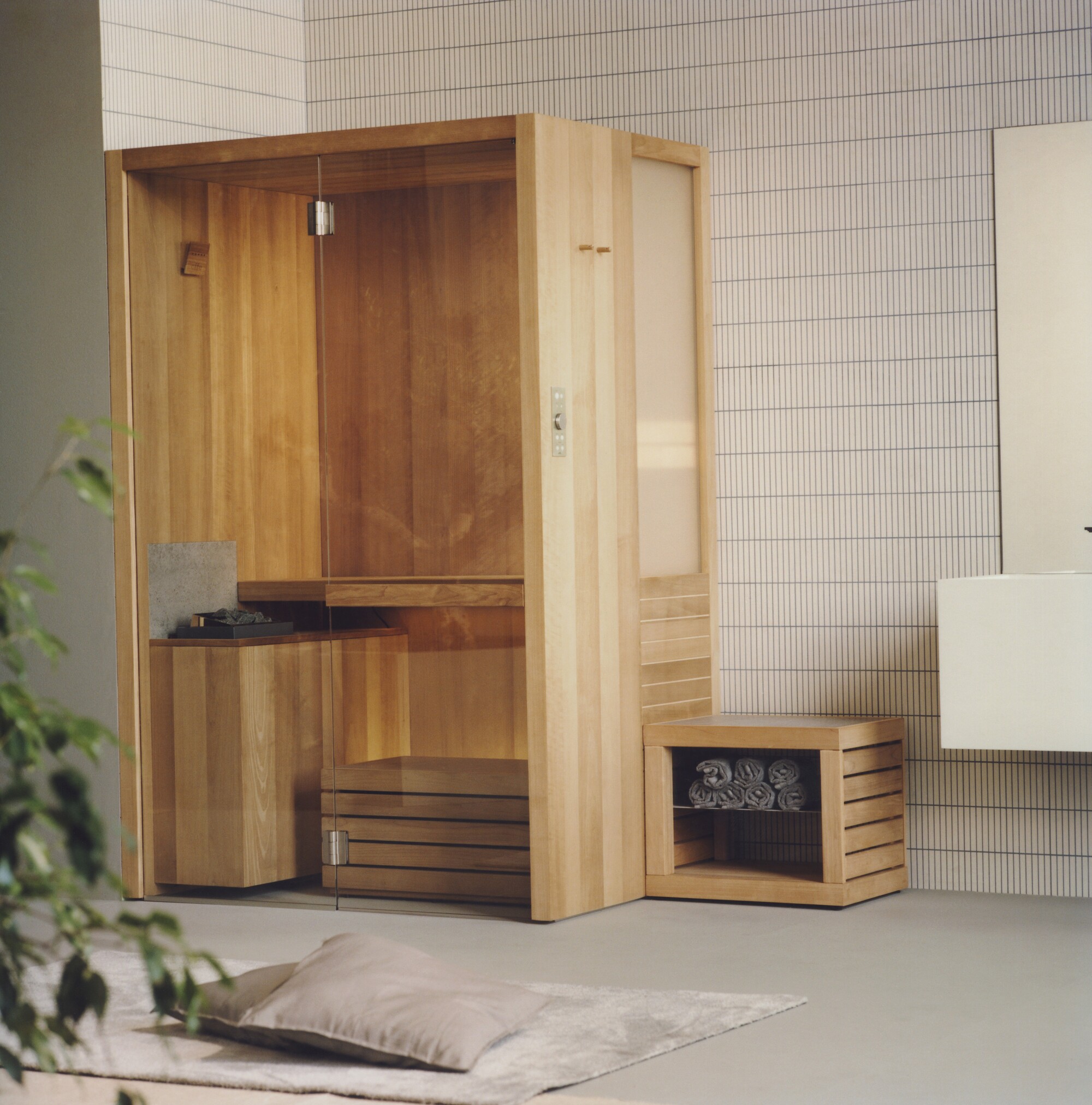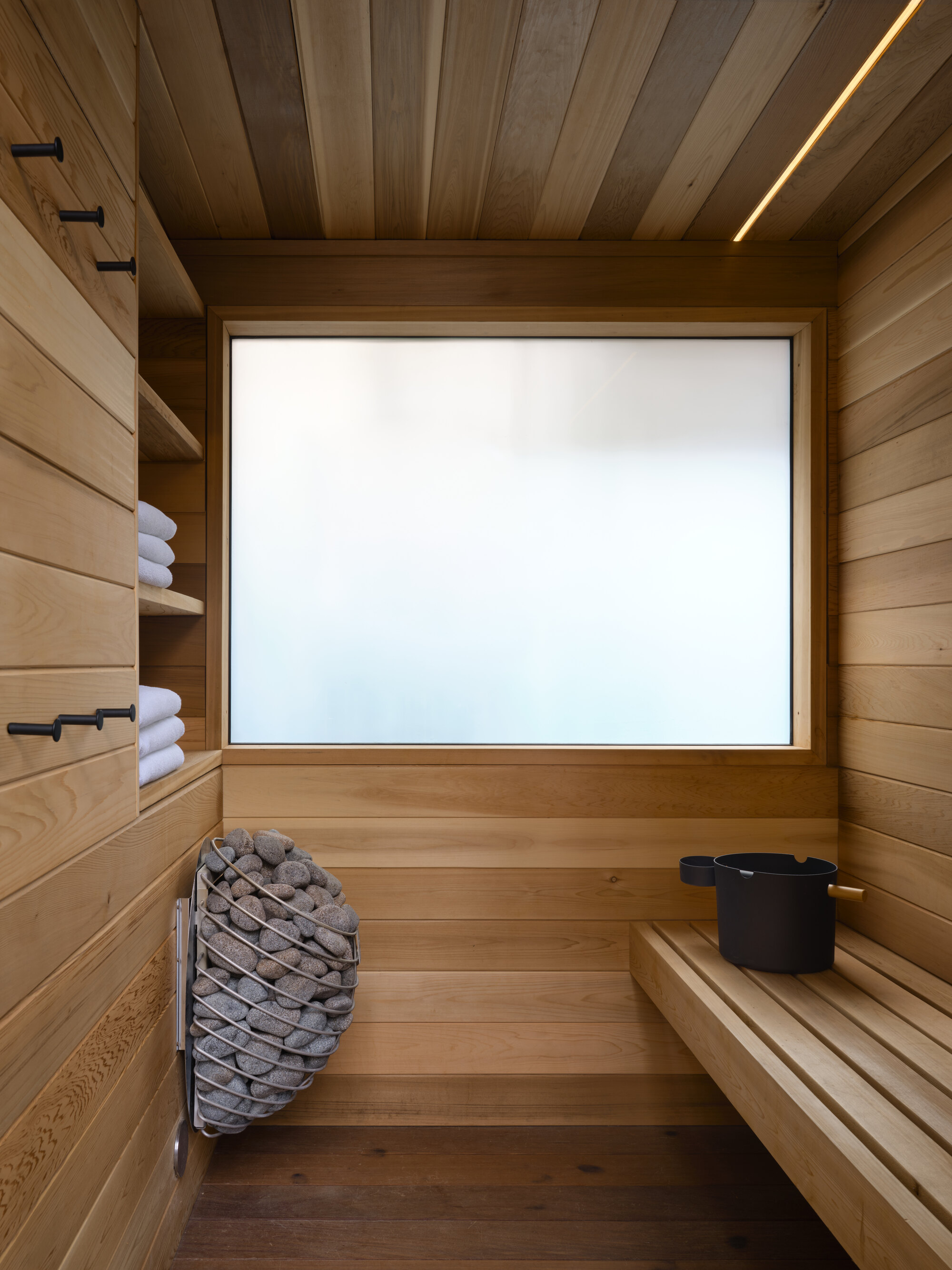
Home saunas have come a long way. What was once considered a luxury home addition is becoming more and more normal in the everyday home, with more compact designs and more affordable options ‘When - more than 30 years ago - we began to imagine home spas, the sector was completely unexplored,’ says Marco Borghetti, CEO of Effe Perfect Wellness - a company specializing in saunas (as well as Turkish baths, sensory showers, and other relaxing-sounding installations).
Today, homeowners are keen to explore holistic design in their homes, creating spaces that focus on health and wellbeing. There is no doubt that the at-home spa experience is taking off - it's a growing interior design trend - so we’ve put together a guide to help you bring a touch of Scandi hygge into your own home.
What are the health benefits of home saunas?
The ample health benefits of the sauna are well documented. Unlike a wet room, these small natural timber-clad cabins can reach temperatures of around 200°F, but humidity remains low at around 20 percent so that perspiration simply evaporates (unlike the high humidity of a steam room).
This dry heat elevates your heart rate and induces vigorous sweating, which helps to relax and soothe. But studies have found saunas beneficial for people with high blood pressure, diabetes, artritis, chronic pain and stiffness, among many other conditions too.
'Beyond its physical advantages, the sauna serves as a tranquil space for reflection, mental clarity, and introspection,' points out Michael Amantea of Amantea Architects. 'It offers the perfect environment to quiet the mind and reconnect with the inner self through meditation and mindfulness practices. Additionally, the sauna can become a communal activity, providing friends and family with a space to connect and socialize.'
Where can a home sauna be fitted in the home?

The answer is surprisingly, pretty much anywhere. While the traditional log cabin interior style you’d find in a Finnish forest is meant to be heated by wood-burning stoves, the modern design is electric, with rocks to ladle water to create the steam or ‘löyly’ as the Finns would call it. ‘The thing about sauna installation is that it can be installed anywhere and only requires an electrical outlet,’ says Marco Borghetti of Effe Perfect Wellness.
This ‘plug-and-play’ aspect of the home sauna is what makes them so much more alluring as an at-home spa option - no faffing around with rewiring or plumbing. This does of course mean the sauna is much more than just its upfront cost, and you need to factor in running costs (although they are reportedly minimal). Electric heaters are controlled either manually from dials integrated into the heater body through an external control panel, or through Wi-Fi.
What if you're lacking space?

If you’re looking for something tailor-fit to your space, converting a small bathroom or ensuite might be one option. But you should also consider factors such as ventilation and the wall build-up.‘The ventilation in most cases for an indoor sauna is recommended to have two points of air intake and two points of exhaust. If you don’t have the space, I’ve also spied some cheaper alternatives that are more of a budget-friendly kit style. (Amazon offers some seriously small one-person saunas for as little as $100.) Kits, while great budget-friendly options, might require specific measurements to be installed. There isn’t as much room for creativity where a bespoke sauna allows for personalization, and more flexibility with wood choices, heaters, bench set-up, and design details.
If you’re looking for a backyard sauna as per Nordic tradition, Effe’s Cabanon features external walls made of aluminum corrugated. ‘It fits harmoniously into different contexts, be it a Nordic landscape, a Mediterranean atmosphere, or even an urban terrace,’ says Marco. You also need to consider electricity and correct cabling running to the sauna if you’re considering the outdoor option.
When it comes to size, the portable sauna style is a great option for the smaller home or more compact space, but if you want a sauna where you can really unwind and lie down, it should be around 70 inches in length. Try and envision how you will use the space - higher benches are a feature of the traditional sauna, staggered to offer a choice in temperature as the heat rises the higher you sit, not to mention more room. ‘Effe has developed a wide range of sauna sizes, from the single-seat sauna characterized by a minimal footprint to the maxi system of any customized size,’ says Marco.
What material is trending?

In terms of material, natural oak cladding is typical for saunas. Go for timber that is sustainable, dimensionally stable and does not weep resin. Popular sauna wood types include aspen, alder, and Western red cedar. Aesthetically, wooden timber brings that coveted Scandi decor feel, but it’s also about the heat insulation, staying cool against your skin. Wood also has antibacterial properties so it’s the hygienic choice and easy to maintain.
As well as wood, glass is proving popular. I recently tried out a glass-fronted sauna cabin on the beach (all in the name of research, of course), with the sea view an enjoyable aspect of the experience - although not so necessary if your sauna is just going to be facing an internal wall. For external-facing glass, we would recommend a sauna-safe double glazing. Full glass walls continue to grow in popularity. This way the sauna becomes a design showpiece in itself.
‘The design leverages the natural characteristics of the site to create a sense of place,' says Michael Amantea of Amantea Architects, who designed this dreamy sauna set-up. 'Meanwhile, it heightens the legibility of the landscape.'
Thoughtfully designed for efficiency, this compact space comfortably accommodates up to four users. 'The interior is predominantly lined with aromatic cedar, defining to the characteristic look and fragrance of a traditional sauna,' says Michael. 'A single translucent window not only allows for natural daylighting but also establishes a visual connection to the garden landscape that surrounds the space.'
Don't forget lighting
Lighting is an extra element to consider. Go dim with a warm ambiance to create a spa-like space. LED lighting on the bench lips and backrests is the most popular lighting option in home sauna.‘You can also opt for a minimalistic wall light, sauna heater spotlight, or starry lighting on the ceiling too.
Make sure your lighting is sauna-specified as lights need to endure heat and humidity. Infrared saunas work differently, using infrared panels that are designed for body contact and are a little more specialist in that they are used in sports therapy. The infrared option is certainly lagging behind the more classic home sauna.







